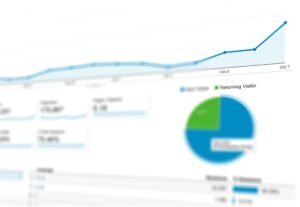Have you ever wondered if backlinks are all constructed similarly? They aren’t—spoiler warning! Explore the world of follow vs no-follow backlinks, two players in the SEO drama that have the power to either clear your way to success or leave you baffled. Learning about these two varieties is similar to choosing between tea and coffee; each has advantages, but they have different moods. The purpose of this post? Describe the fundamentals of each and explain how knowing them will improve the success of your website. Are you prepared to offer your SEO a significant boost? Let’s get started!
Understanding Follow vs No-Follow Backlinks

Let’s start with follow backlinks. These are like golden tickets for your website. When another site links to yours with a follow backlink, it passes some of its “link juice” to you. This boosts your site’s authority and makes it appear more trustworthy to search engines. As a result, your ranking in search results can improve, helping more people find you online. It’s like a high-five from a friend, telling everyone you’re awesome!
Now, let’s not overlook no-follow backlinks. While they don’t pass on that link juice, they still play a crucial role in your SEO strategy. Here’s why:
- Traffic generation: They can still bring visitors to your site.
- Brand exposure: Your brand gets noticed on different platforms.
- Backlink profile diversity: Adds variety to your link profile, which search engines love.
- Safety from endorsing untrusted content: You avoid boosting sketchy sites.
- Avoidance of penalty risks: Helps you steer clear of potential SEO penalties.
The Importance of Both Follow and No-Follow Backlinks in SEO
Why is link diversity such a big deal, especially when it is either the follow vs no-follow backlinks? Think of it like a balanced diet for your website. Just like you need a mix of veggies, fruits, and proteins to stay healthy, your site needs a mix of follow and no-follow backlinks to thrive. This variety helps search engines view your site as trustworthy and legitimate.
If your site only has one type of backlink, it might look like you’re trying to cheat. And nobody likes a cheater, right? Follow backlinks are the superstars for boosting your site’s authority. When a reputable site links to yours, it’s like getting a thumbs-up from a cool kid. This not only makes your site more credible but also helps its rankings in search results. The more high-quality follow backlinks you have, the more likely you are to climb the SEO ladder, gaining better visibility.
How to Differentiate and Use Follow vs No-Follow Backlinks
Wonder how to tell if a link is follow or no-follow? It’s like checking a secret code! Peek at the HTML code of the webpage. If you see the rel="nofollow" attribute in the link’s HTML tag, it’s a no-follow link. No such label? Then it’s a follow link, ready to pass some juicy SEO goodness. This trick saves time when prioritizing links for your SEO strategy.
When to Use Follow vs No-Follow Backlinks
When should you use either a follow vs no-follow backlink? Use follow links when endorsing quality content. They’re like a virtual high-five to sites you trust or align with your SEO goals. They help boost the SEO ranking of linked sites, making them powerful tools.
Conversely, no-follow links are perfect for untrusted or paid content. They say, “Here’s a link, but I’m not vouching for it.” Use them for user-generated content or when linking to sites you don’t want to boost with your SEO authority.
To optimize both types, mix them strategically. Aim for a natural balance that reflects genuine connections. Use follow links to build strong relationships with content you support and sprinkle in no-follow links to maintain a diverse and credible backlink profile. This boosts your SEO and keeps your site safe amid ever-changing search engine algorithms.
Common Misconceptions About Follow vs No-Follow Backlinks
Think no-follow links are a waste of time? Nope! They might not pass “link juice” like follow links, but they still pack a punch. No-follow links drive traffic to your site, boost brand exposure, and make your backlink profile look natural. Search engines value this diversity as it shows your site isn’t just gaming the system. So, no-follow links definitely belong in your SEO toolbox.
Another myth is that only follow links matters for SEO success. That’s like saying you only need one ingredient to bake a cake. Sure, follow links are crucial as they can boost your site’s authority and ranking. But relying solely on them might make your link profile seem sketchy. A balanced mix of both follow and no-follow links shows search engines that your site is credible and well-connected.
For small businesses, understanding both link types is crucial. You want your digital marketing efforts to be effective, right? By using smart combinations of follow and no-follow links, you can enhance your SEO strategy and grow your online presence. It’s like having a well-rounded team boosting your brand.
Best Practices for a Balanced Backlink Strategy
Quality over quantity—that’s the golden rule for backlinks. You want links from reputable sites because search engines see them as votes of confidence. The more credible the source, the more authority it passes to your site. But don’t ignore no-follow links. They’re key to building a diverse backlink profile, which looks natural and keeps search engines happy. Aim for a healthy mix of both follow and no-follow links.
Here are some best practices to keep your backlink strategy in top shape:
- Prioritize reputable sources
- Balance follow and no-follow links
- Monitor your backlink profile regularly
- Avoid link schemes
- Use natural anchor text
- Engage in ethical link-building
Conclusion
Follow vs no-follow backlinks each plays a key role in smart SEO strategies. Follow links pass “link juice,” boosting your site’s authority and search rankings, while no-follow links help maintain a natural, diverse backlink profile and can still drive valuable traffic. Both are essential for building credibility and avoiding an overoptimized link strategy.
By understanding how to balance both types, you can create a well-rounded backlink portfolio that enhances your SEO efforts. It’s not just about rankings—it’s about crafting a strategy that works long-term. Ready to elevate your site’s SEO with the right mix of backlinks?
FAQ
Do follow vs no-follow backlinks differ?
Follow backlinks to pass authority to your site, boosting its rankings. No follow backlinks don’t pass authority, but they still offer benefits like traffic generation and backlink diversity. Both types have their unique value.
Is no follow backlink good?
No-follow backlinks are great for generating traffic, increasing brand exposure, and diversifying your backlink profile. They can also help avoid penalties by not endorsing untrusted content.
When should you use no-follow links?
Use no follow links for content you don’t 100% trust, like user-generated or paid content. They’re a smart way to keep your link profile diverse and stay on Google’s good side.
Do follow link share is too high?
If your do follow link share is too high, it might look unnatural to search engines. Balance it with no-follow links for a more natural backlink profile, reducing the risk of penalties.




